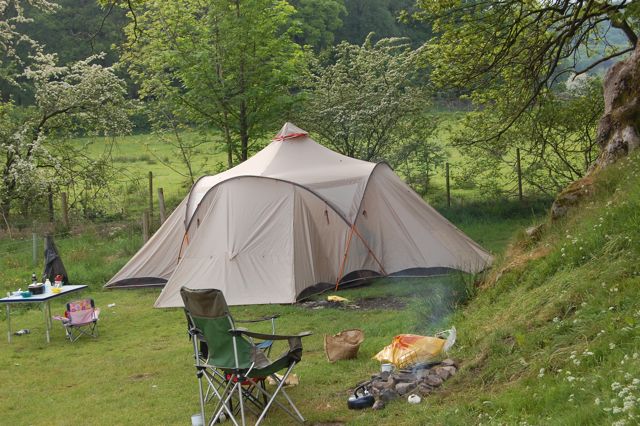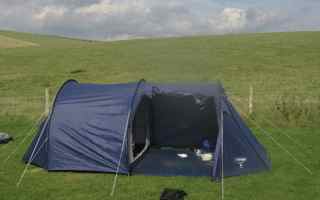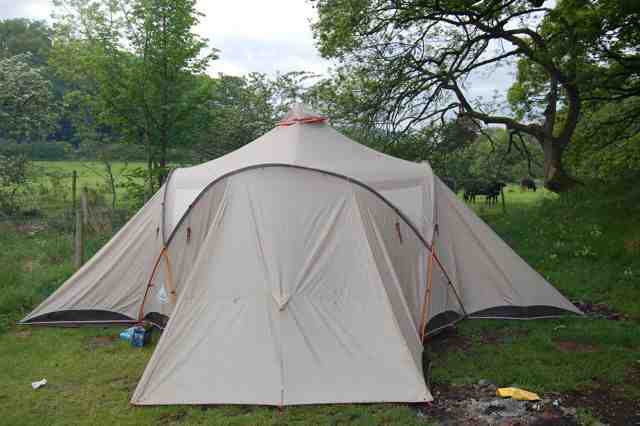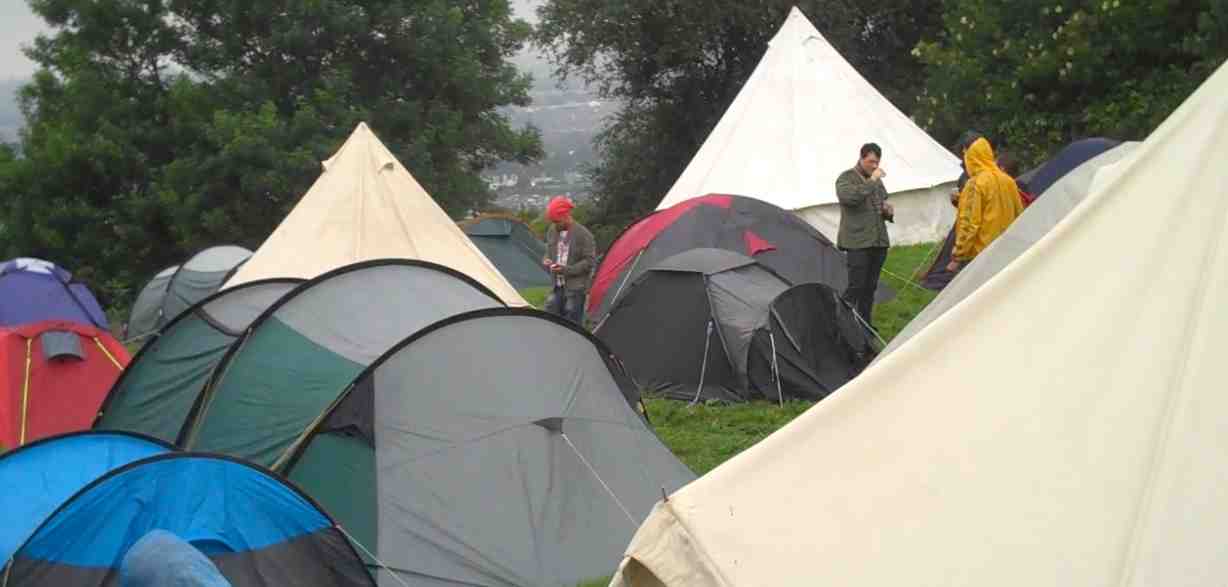On a windy field in the Cotswolds, I roasted some lamb shoulder over a low campfire. The field was around the back of Abbey Home Farm with a view of the surrounding land, upon which the lamb in question had been organically reared.
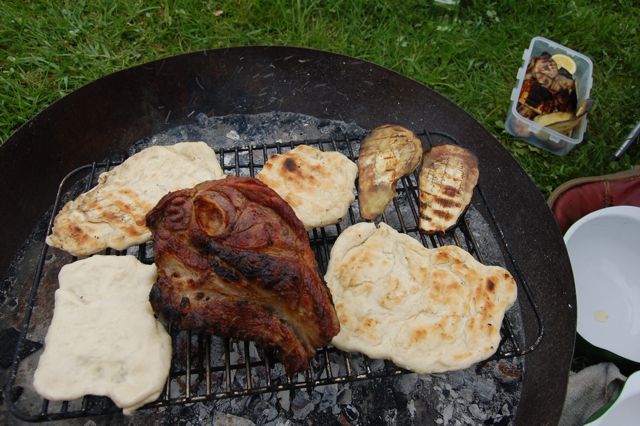
I have cooked lamb shoulder steaks on an open fire before. They are an ideal cut for the campfire, with a goodly amount of fat, so they are less liable to dry out. I reckoned a larger joint might work.
Math set the fire and balanced a grill, keeping the meat well out of the flames, but close enough so that it would cook. I rubbed the joint with salt, pepper and olive oil and placed it on the grill. After turning it a couple of times, it was browned and sealed. To speed up the cooking and keep moisture in, I then wrapped it in tin foil. I can’t give cooking times, because it depends on the ferocity of the fire. A joint like this, with a substantial bone in it and side of fat, doesn’t require exact timings.
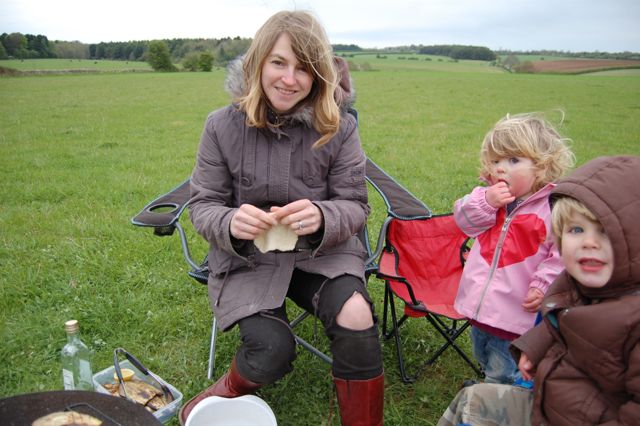
Once it was nearly cooked, I removed the joint from the foil and exposed it to the fire again, to crisp up the outside. I am considering taking a meat thermometer on my next camping trip, Math thinks this is a utensil too far, but for cooking larger joints of meat on the fire I’m going to put it down as a necessity. I am quite good at telling when meat is cooked by pressing it and judging how bouncy it is, but the bigger the joint, the harder that is to do.
Once the lamb was ready, I set it aside to rest for fifteen minutes. Then I flapped some thin slices of aubergine down on the grill. Lightly charred aubergine has a smoky flavour that fits campfire cooking. For substance, I nudged some homemade flat bread dough onto the grill, the plan being to serve the lamb with the aubergine wrapped in garlicky, soft, warm bread. Here’s my recipe for making flat breads on a campfire.
Cath’s campfire flat breads
This takes a bit of prep at home, where I weigh out the dry ingredients and store them in a sealed plastic bag. I also take a little extra flour in case my dough turns out a little too wet.
Dry ingredients:
500g strong white bread flour
1 1/2 tsp dried yeast
1 1/2 tsp salt
What to add at camp:
300ml warm water
1 clove garlic, finely sliced
4 or so tablespoons of olive oil
Make the dough as soon as the fire is lit. You want it to rise before you cook it. In a mixing bowl, put the dry ingredients and mix the water in with your hand. You can knead the dough in the bowl. Do this for at least five minutes, ten if you can. You want a smooth dough, not too wet or dry. Add some more flour or water to achieve this. Leave it in the bowl covered with a damp tea towel by the side of the fire, so that the dough rises.
Leave it for at least forty minutes, longer if you can. Finely slice the garlic clove and mix it into the olive oil. Once you are ready to cook the breads, shape them by pulling off tangerine-sized lumps of dough, roll it into a ball in your hand and then flatten it as thin as you can, dip it into the garlic flavoured oil and throw it on the grill. Once the underside is browning and bubbling up a little, flip the bread over to cook the other side. Serve immediately.
Sliced aubergine grilled over the campfire
2 aubergines
Olive oil
1 clove garlic
Salt and black pepper
This is so simple. Aubergines thrive when cooked over a fire, getting just the right smoky crisp texture. Simply slice the aubergine 1/2 cm thick, brush with quite a lot of oil, but not so it is dripping. Cook over your fire until it is charring, flipping once. Crush a clove of garlic and put in a serving bowl with salt and pepper. When each slice is done on both sides, put it in your serving bowl with the salt, pepper and crushed garlic. Mix thoroughly, you can eat hot, warm or cold.
Abbey Home Farm
View Campsites, campfires, UK in a larger map

